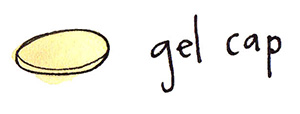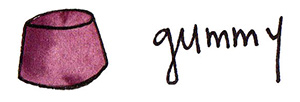Scratching your head over all those different supplement delivery methods? Here's our quick overview of the pros and cons of various forms.

The outer shells of capsules are made from either gelatin or a starch, such as carrageenan (from seaweed) or pullulan (fermented from tapioca). Capsules also require flow (anticaking) agents ot keep the ingredients from clumping together.

In addition to the active ingredients, excipients (inactive substances that serve as the vehicle or medium for a supplement) and binders are added to tablets to allow them to compress and then disintegrate when ingested. Typical ingredients include xanthan gum and microcrystalline cellulose.

The main nonactive ingredient in gel caps is gelatin, typically from a cow or pig source, but it can be fish-based or vegetarian. Gel caps are easy to swallow and have great nutrient absorption—and they contain fewer non-nutritive excipients than tablets.

Originally designed to make it more pleasant for kids to take vitamins, gummies are now adult-appropriate, too. There are two types: those made with gelatin and those made with fruit pectin. Most contain added sugars for taste, which range from juice concentrates to artificial sweeteners.

Powder supplements contain a flow agent (such as magnesium stearate, silicon dioxide, or rice husks) to prevent ingredient clumping. Some agents and additives are chosen based on active ingredients. For example, bitter-masking agents and sweeteners are added to improve the taste of some protein powders.